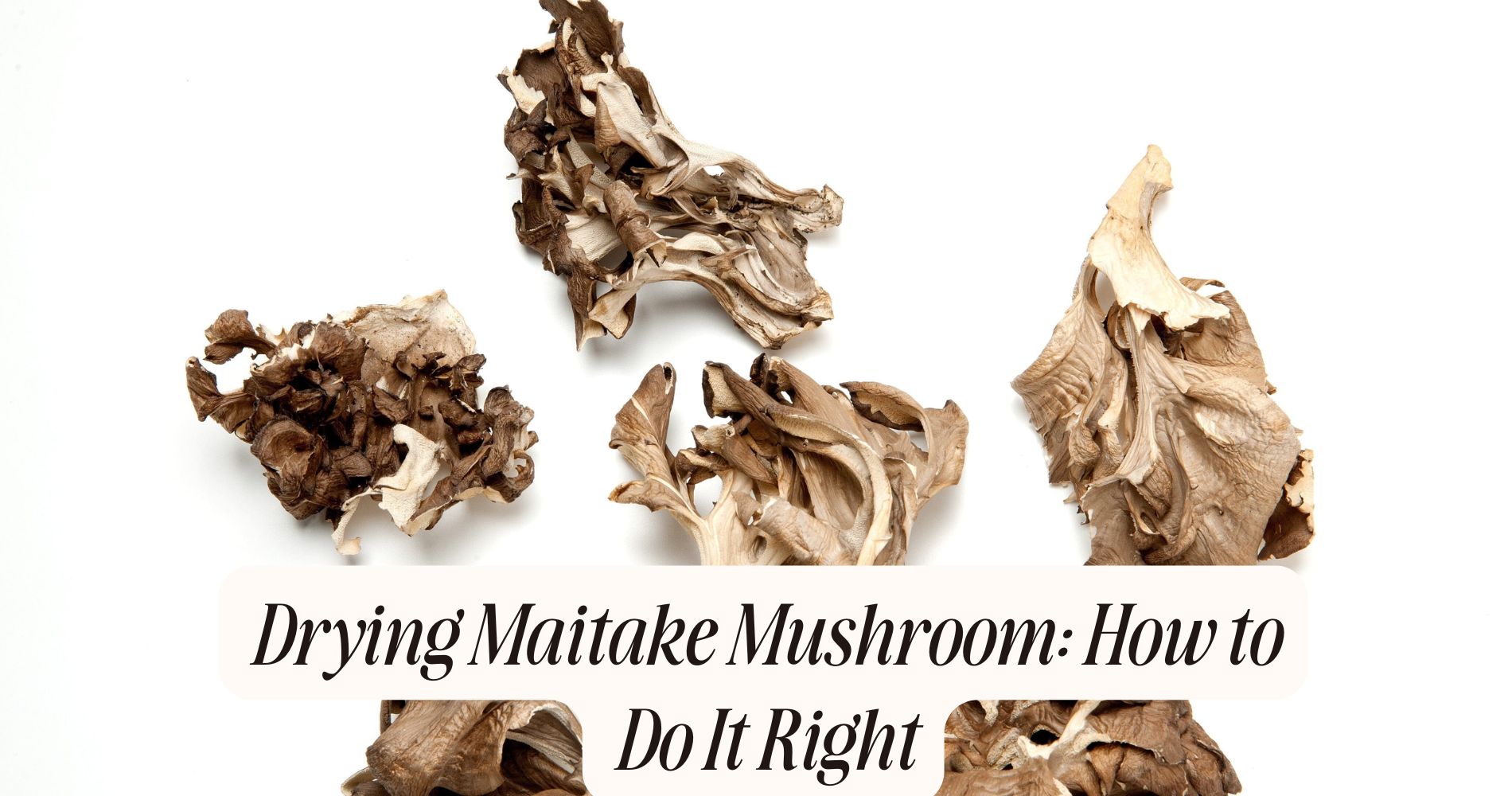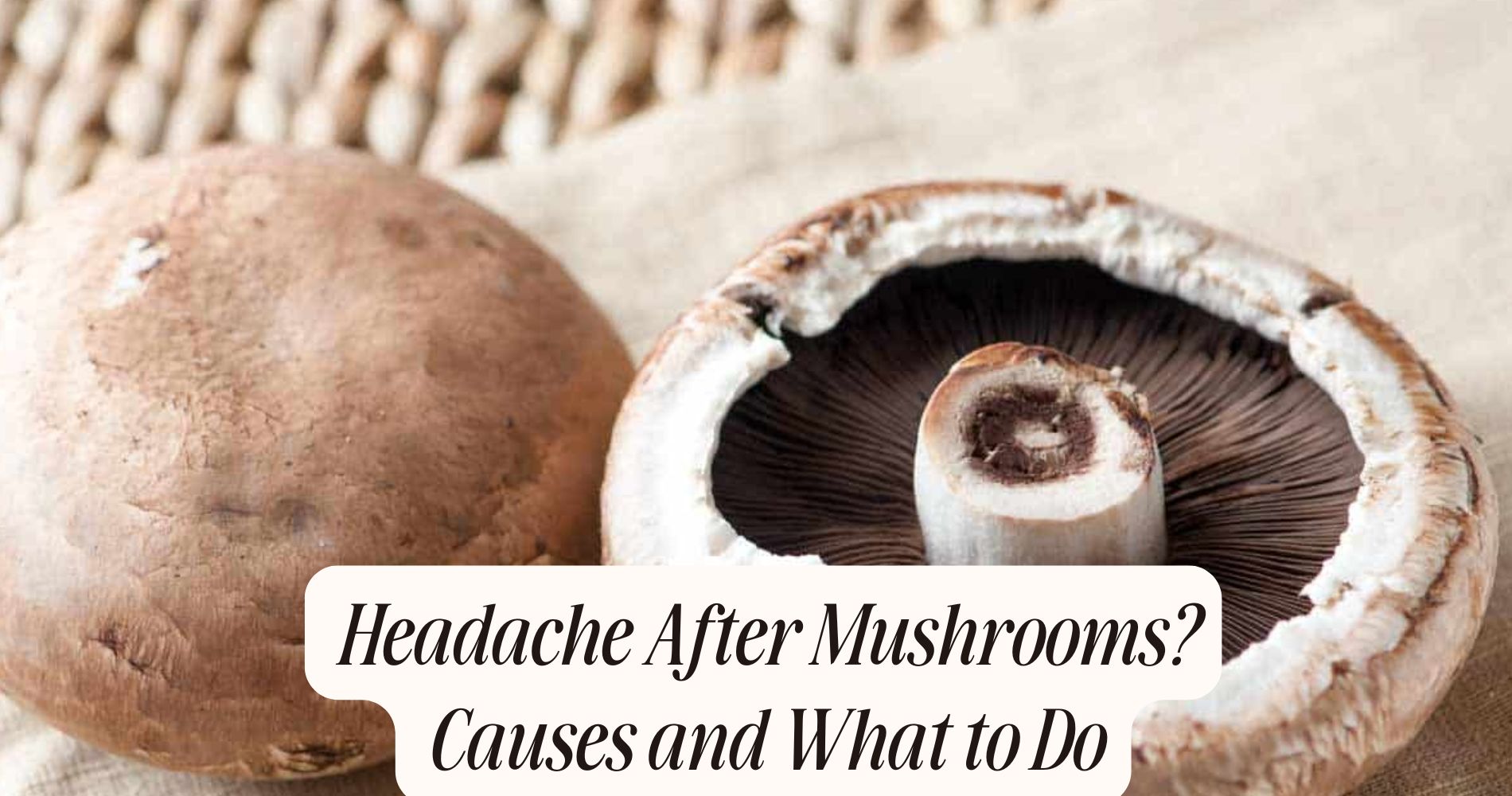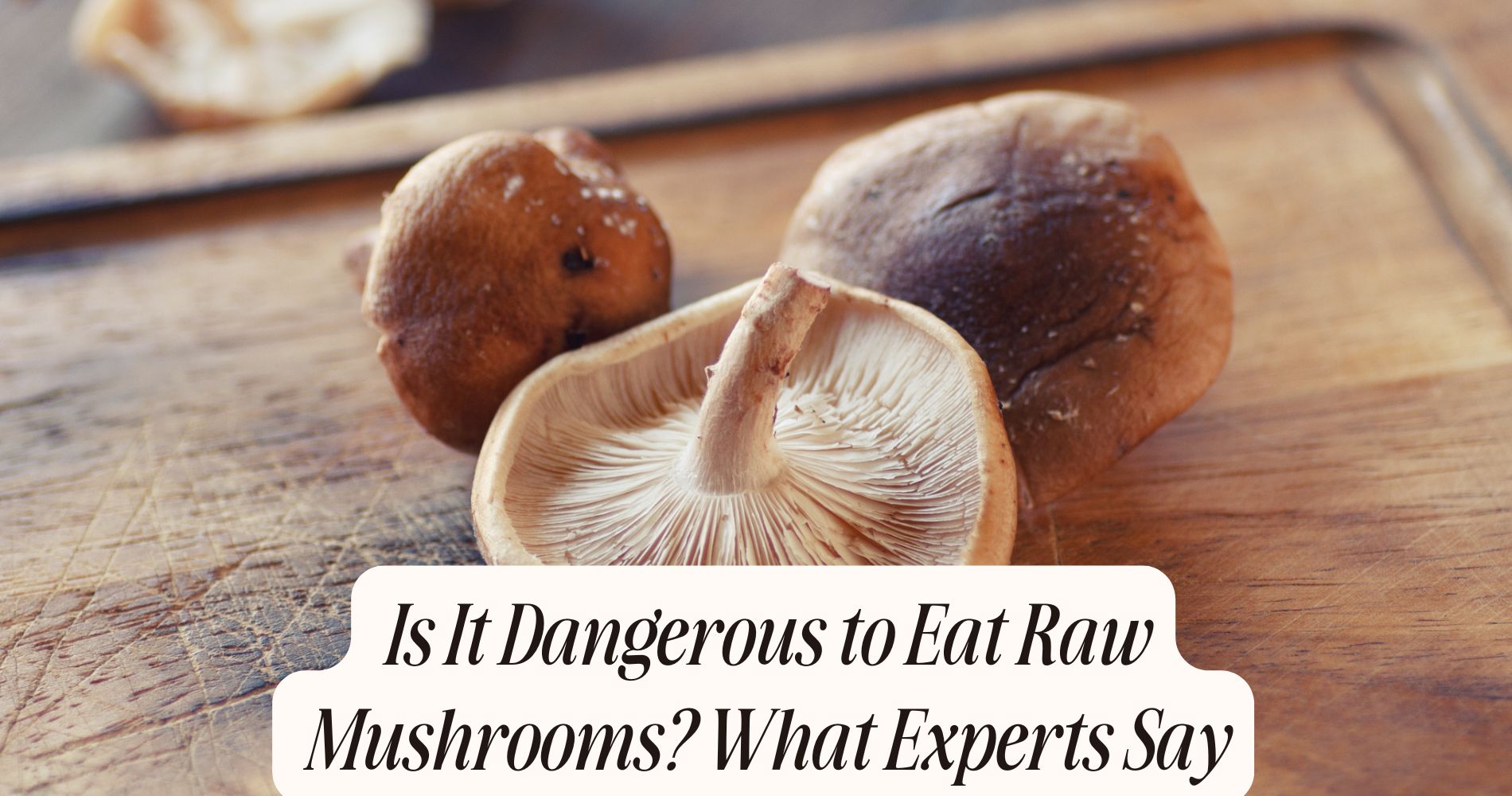
Drying Maitake Mushroom: How to Do It Right
Drying maitake mushroom properly starts with selecting fresh, firm specimens. Gently clean them with a soft brush and slice them into uniform ¼-inch pieces. There are several methods for drying maitake mushrooms, including air drying, using a dehydrator, or oven drying, each offering its own benefits. Once dried, store the mushrooms in airtight containers in a cool, dark place. Continue reading to discover more tips on how to use these flavorful mushrooms in your recipes.
Understanding Maitake Mushrooms and Their Benefits
When you explore the world of maitake mushrooms, you'll discover not only their unique flavor but also a range of impressive health benefits.
These mushrooms boast a high nutritional value, rich in essential nutrients like vitamins D and B, minerals, and antioxidants. Their low-calorie count makes them a great addition to any diet.

Moreover, maitake mushrooms possess notable medicinal properties. They've been studied for their potential to support immune function and regulate blood sugar levels.
Their polysaccharides, particularly beta-glucans, can enhance immune response and may even have anti-cancer effects.
Preparing Maitake Mushrooms for Drying
To effectively prepare maitake mushrooms for drying, start by selecting fresh, firm specimens that are free from blemishes or signs of decay.
Once you've chosen your mushrooms, use appropriate cleaning techniques to remove any dirt or debris. A soft brush or damp cloth works well—avoid soaking them in water, as excessive moisture can hinder the drying process.
Next, consider slicing methods; cutting the mushrooms into uniform pieces enhances drying efficiency and guarantees even texture. Aim for slices about ¼-inch thick. If you prefer, you can also leave smaller clusters whole.
Properly preparing maitake mushrooms not only maximizes flavor retention but also assures they dry evenly, resulting in a superior final product.
Methods for Drying Maitake Mushrooms
While various methods exist for drying maitake mushrooms, each technique has distinct advantages that cater to different preferences and resources.
You can choose from air drying, which is simple and requires no special equipment, but it may take longer and depends on humidity levels.
Alternatively, using a dehydrator offers precise temperature control, enhancing flavor preservation while speeding up the process.

Oven drying is another option; it’s quick but requires careful monitoring to prevent cooking the mushrooms.
Regardless of the method, guarantee the mushrooms are sliced evenly to promote uniform drying.
Each of these dehydration techniques provides viable solutions, allowing you to enjoy your maitake mushrooms year-round without sacrificing their rich flavors.
Storing Dried Maitake Mushrooms
Properly storing dried maitake mushrooms is vital to maintaining their flavor and extending their shelf life.
Begin by ensuring they're completely dry before storage, as any residual moisture can lead to mold growth. Use airtight containers made of glass or vacuum-sealed bags for proper storage, as these minimize air exposure.
Keep the containers in a cool, dark place to further enhance moisture control and prevent degradation from light and heat. It's important to avoid humidity; consider adding silica gel packets to absorb excess moisture if you're in a particularly humid environment.
Regularly check your stored mushrooms for any signs of spoilage. Following these guidelines will help you enjoy the rich, earthy flavors of dried maitake mushrooms for months to come.
Using Dried Maitake Mushrooms in Recipes
Using dried maitake mushrooms in recipes opens up a world of culinary possibilities, as their rich, umami flavor can enhance a variety of dishes.
To maximize their potential, you'll first want to focus on rehydrating mushrooms properly. Soak them in warm water for about 20-30 minutes until they’re plump. This process not only softens the mushrooms but also infuses the soaking liquid with their intense flavor, which can be used as a broth or seasoning in your recipes.

Dried maitake works well in soups, risottos, and stir-fries, contributing depth and complexity. Experiment with adding them to sauces for an additional flavor enhancement, complementing meats or vegetables effortlessly.
Enjoy the versatility these mushrooms bring to your culinary creations!
Enjoy Mushroom Benefits with SUPER MUSHROOM GUMMIES
Looking for an easy and tasty way to enjoy the benefits of mushrooms without drying them yourself? Well Gummies' SUPER MUSHROOM GUMMIES are packed with 10 functional mushrooms, providing natural brain support, sharper focus, and immune health. These vegan gummies deliver a balanced energy boost without the jitters or crashes, making them a convenient option for any time of day. With a fresh wild berry flavor, they taste just like your favorite candy. Energize your body and mind with SUPER MUSHROOM GUMMIES!
Frequently Asked Questions
Can I Reuse Drying Equipment for Other Foods?
Yes, you can reuse drying equipment for other foods. Just make certain you clean the equipment thoroughly between uses to prevent cross-contamination. Different drying methods may require specific considerations, so always check compatibility before starting.
How Long Do Dried Maitake Mushrooms Last?
Dried maitake mushrooms typically last about one year if stored properly. For ideal shelf life, keep them in an airtight container in a cool, dark place. Follow these storage tips to maintain their flavor and quality.
Can Dried Maitake Mushrooms Be Rehydrated?
Yes, you can rehydrate dried maitake mushrooms using various rehydrating techniques. Soaking them in warm water enhances their flavor, making them a valuable addition to dishes. Experiment with different methods to find your preferred taste profile.
Are There Any Safety Precautions for Drying Mushrooms?
When drying mushrooms, prioritize mushroom safety by ensuring they're fresh and clean. Use proper drying techniques, like maintaining low humidity and adequate airflow, to prevent mold and preserve their quality for safe consumption later.
What Is the Ideal Humidity Level for Drying Mushrooms?
For effective drying, you need to maintain low humidity levels, ideally below 60%. Implementing proper humidity control alongside effective drying techniques guarantees mushrooms dry thoroughly, preventing spoilage and preserving flavors. Stay vigilant during the process.
Conclusion
To sum up, drying maitake mushrooms is a straightforward process that enhances their flavor and preserves their nutritional benefits. By understanding their preparation, selecting the right drying method, and ensuring proper storage, you can enjoy these mushrooms long after their harvest. Incorporating dried maitake into your recipes not only adds a rich depth of flavor but also boosts your meals with their unique health properties. With these tips, you’re well-equipped to make the most of your maitake mushrooms.




